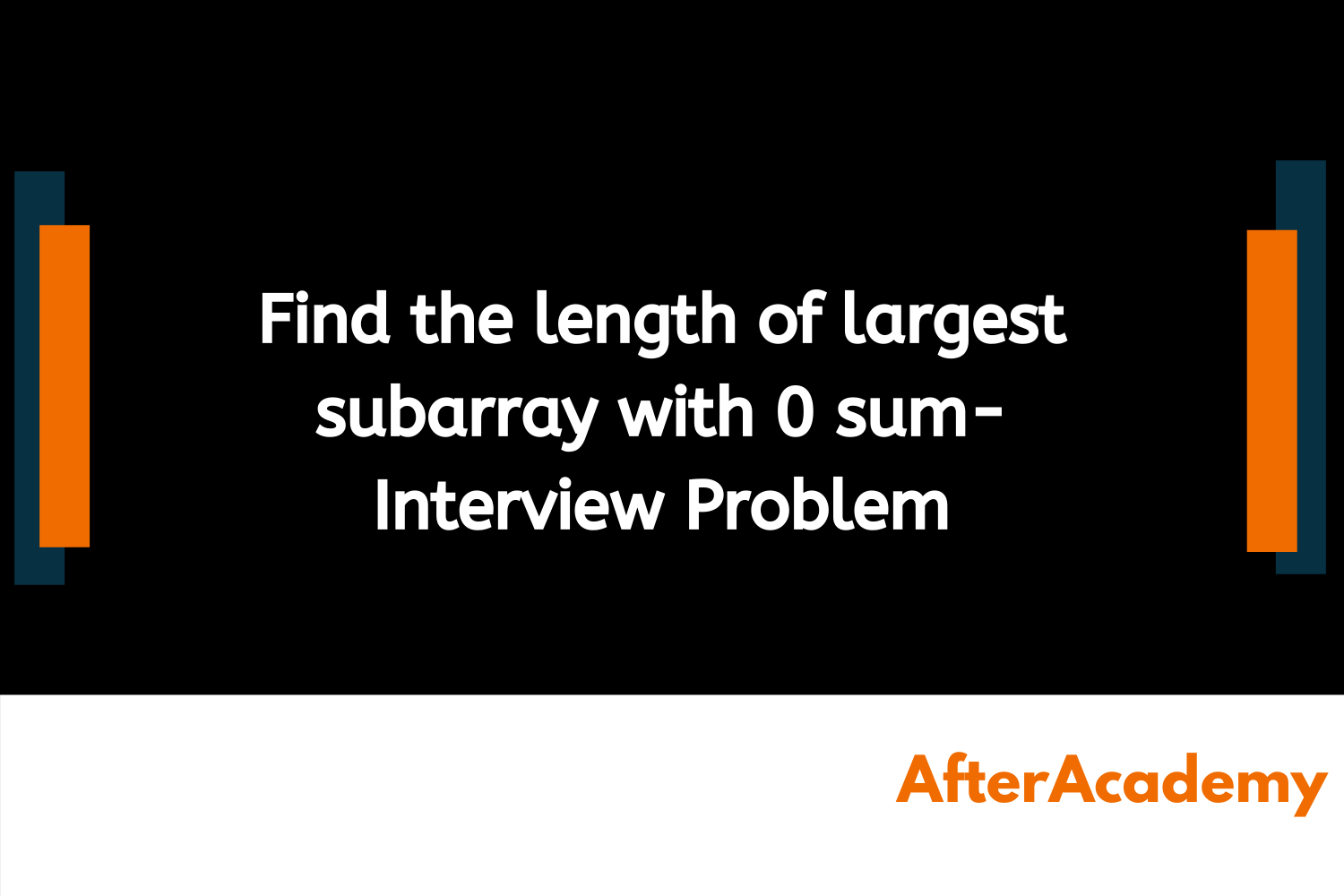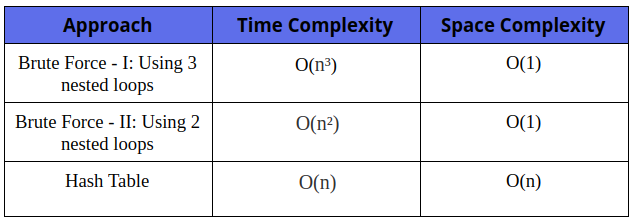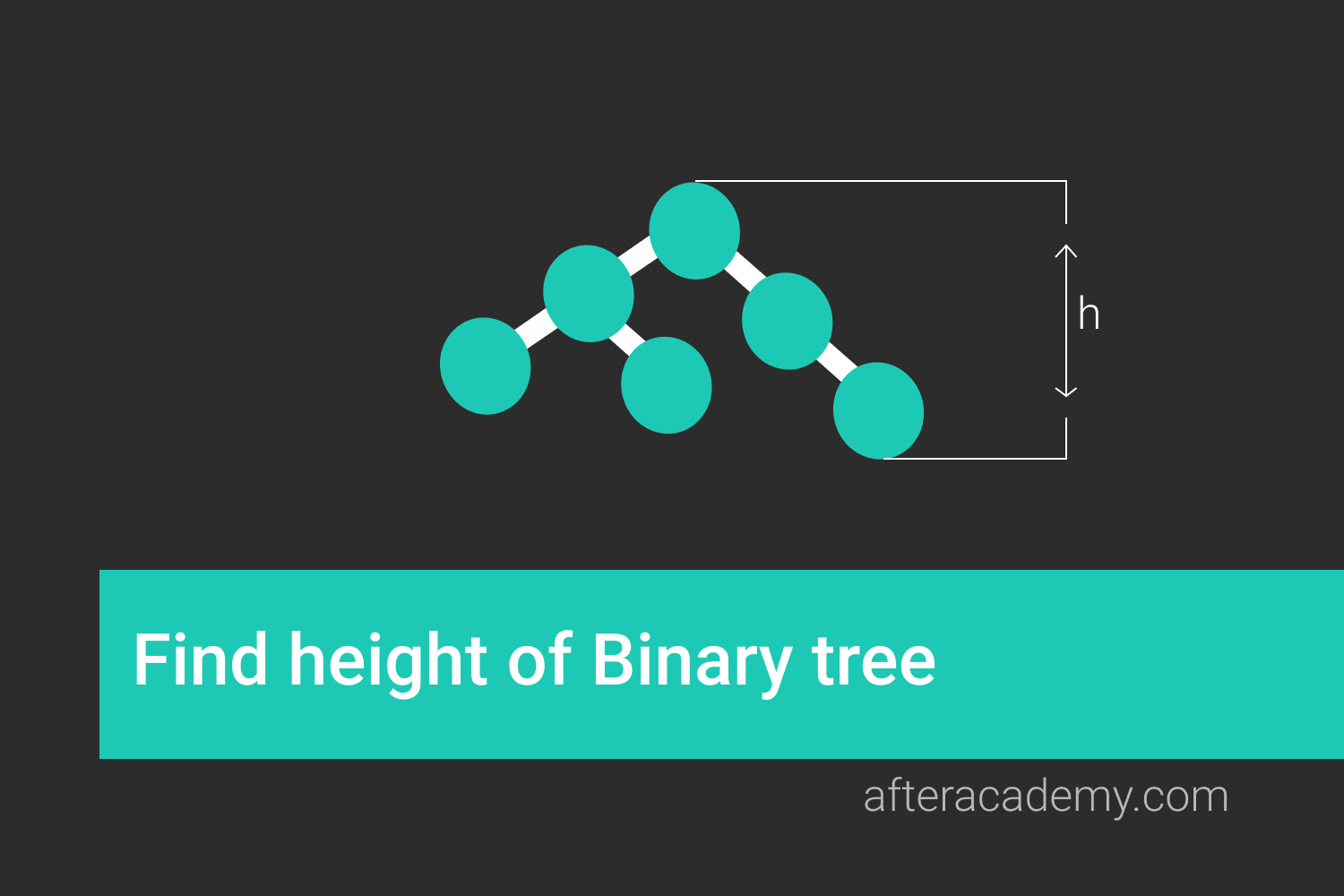Find the length of largest subarray with 0 sum

Difficulty: Hard
Asked in: Microsoft
Understanding the Problem
Problem Description: Given an array A[] of n integer elements, find the length of the longest subarray with sum equals to 0.
For Example:
Input : A[] = {15, -2, 0, -8, 3, 7, 10, 23}
Output : 5
Explanation : The largest subarray with 0 sum is -2, 0, -8, 3, 7
Possible follow-up questions to ask the interviewer:-
- Is it allowed to modify the array? ( Ans: Sure, but a subarray is an ordered contiguous segment of the original array)
- What if no subarray has a sum equal to 0? ( Ans: Just return 0)
Solutions
We are discussing two ways to solve this problem :
- Brute Force Approach I : Using 3 nested loops.
- Brute Force Approach II : Using 2 nested loops.
- Using Hash Table: Fill Hash Table with sum up to all positions from 0 and check if two elements in the Hash Table have the same value or value equal to 0.
1. Brute force approach I : Using 3 nested loops
A simple solution is to check for all subarrays one by one and see if its sum is equal to zero or not. For this, we generate all (
i, j): i <= j
pairs and calculate the sum between.
Pseudo-Code
int maxLengthSubarraySumToZero(int A[], int n)
{
int maxLen = 0
for(i = 0 to n-1)
{
for(j = i to n-1)
{
int sum = 0
for(k = i to j)
sum = sum + A[k]
if(sum == 0)
{
if(maxLen < j-i+1)
maxLen = j-i+1
}
}
}
return maxLen
}Complexity Analysis
Time Complexity: O(n³) (Why?)
Space Complexity: O(1)
Critical ideas to think!
- In the above approach, the sum of the subarray is calculated in o(n). Could you optimize it using some pre-computation?
2. Brute force approach II : Using 2 nested loops
This is the optimized version of the above approach. The idea is to start at all positions in the array and calculate running sums. The outer loop picks the beginning element, the inner loop finds the possible sum from the first element picked by the outer loop and if sum comes out to be zero, it checks the length and updates it with max length.
Pseudo-Code
int maxLengthSubarraySumToZero(int A[], int n)
{
int maxLen = 0
for (i = 0 to n-1)
{
int sum = 0
for (j = i to n-1)
{
sum = sum + A[i]
if(sum == 0)
{
maxLen = max(maxLen, j-i+1)
}
}
}
return maxLen
}Complexity Analysis
Time Complexity: O(n²) (Why?)
Space Complexity: O(1)
Critical ideas to think!
- How many subarrays are possible for an array?
3. Hash Table
The idea is to store the sum of all the subarrays starting from the beginning. From that, if any of the values repeat itself, let’s say sum till i index and sum till j index is same, it means that the sum of elements in the subarray A[i+1…..j] is 0. Moreover, if the sum any index i is 0, then the subarray A[0…i] has sum of its elements equal to 0.
Solution Steps
- Create a hash table H and store sum and its ending index as key-value pairs.
- Declare a variable maxLen = 0, which will store the maximum length of subarray whose sum is zero.
- Iterate through the array and for every A[i], calculate the sum from 0 to i.
- If sum turns out to be 0, then update maxLen to i, if (maxLen < i).
- Check if that sum is present in the hash table or not.
- If exist, then update the maxLen if ( i - H[sum]> maxLen ) to i - H[sum].
- If not, insert it in hashmap, H[sum] = i.
5. Return maxLen.
Pseudo-Code
int maxLengthSubarraySumToZero(int A[], int n)
{
Create a HashTable H
int sum = 0
int maxLen = 0
for(i = 0 to n-1)
{
sum = sum + A[i]
if (sum == 0)
{
if (maxLen < i)
{
maxLen = i+1
}
}
else if(sum in H)
{
if(maxLen < i-H[sum])
{
maxLen = i-H[sum]
}
}
else
H[sum] = i
}
return maxLen
}Complexity Analysis
Time Complexity: O(n) ( Why? )
Space Complexity: O(n), for storing the Hash Table
Critical ideas to think!
- Do we need to check explicitly for zero or it can be handled?
- Can you solve this problem efficiently using other data structures?
Comparison of different solutions

Suggested problems to solve
- Length of longest subarray sum equals k
- Length of the largest subarray with contiguous elements.
- Maximum length of subarray such that the sum of the subarray is even.
- Maximum subarray sum.
- Find maximum average subarray of k length.
Happy Coding! Enjoy Algorithms!





